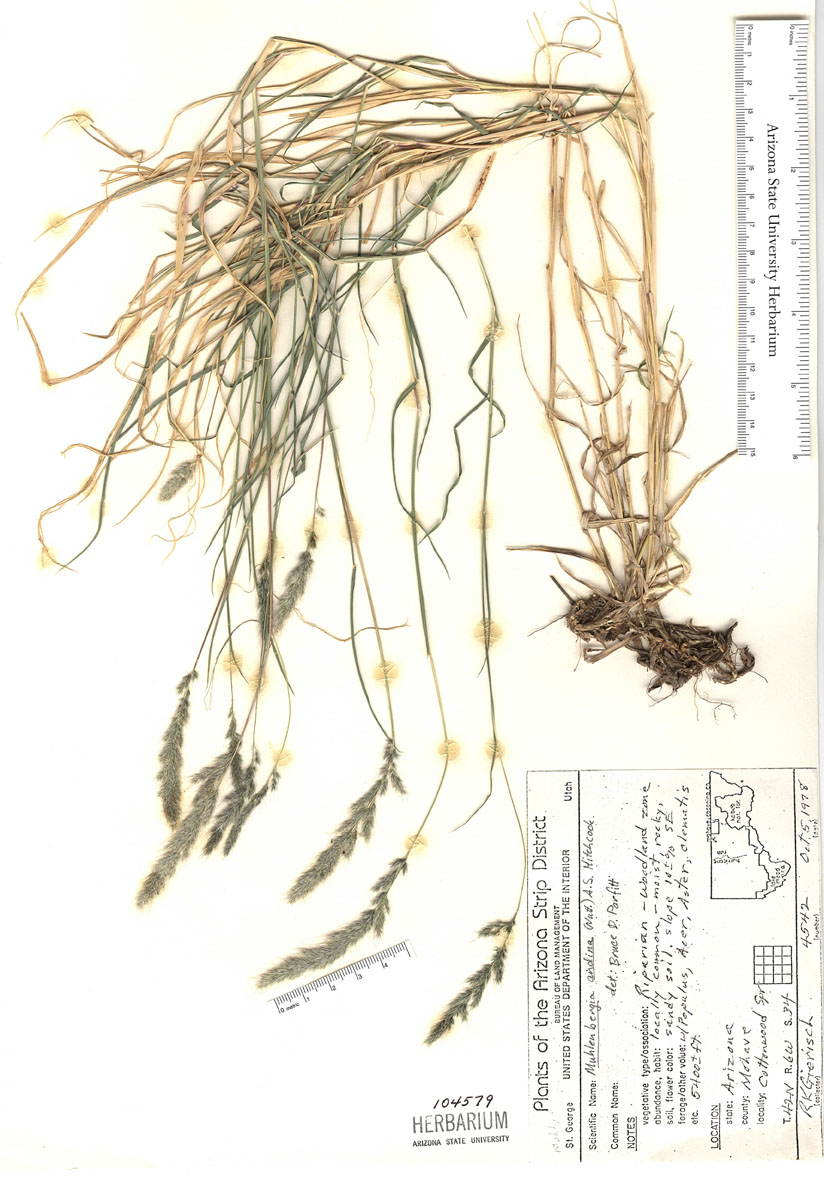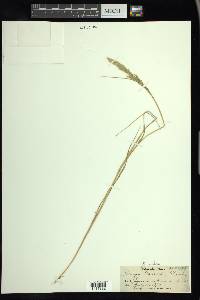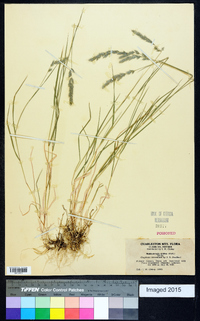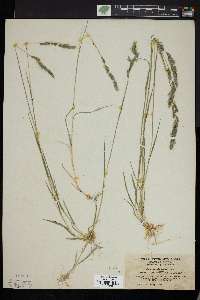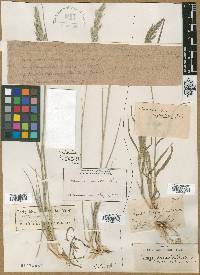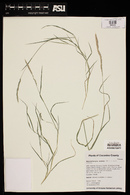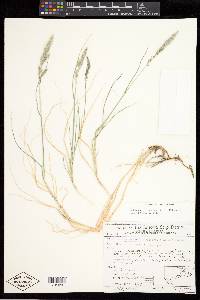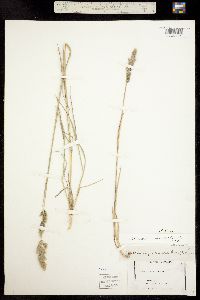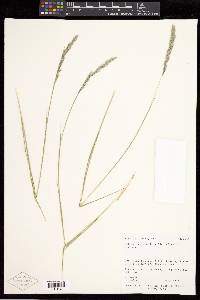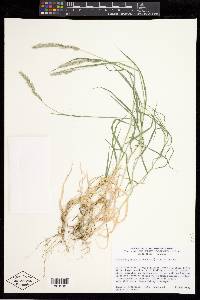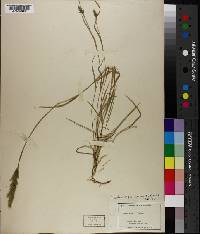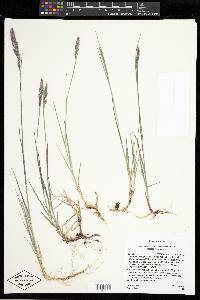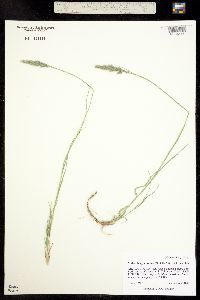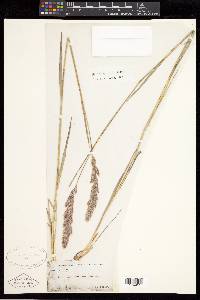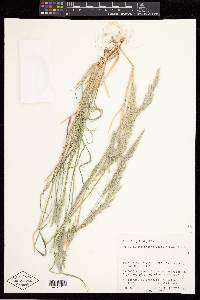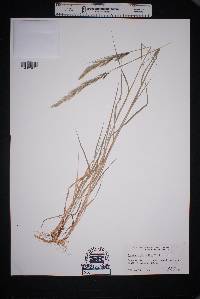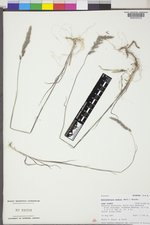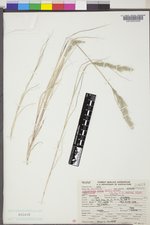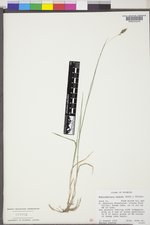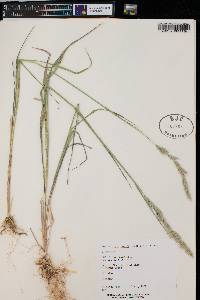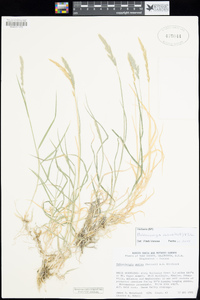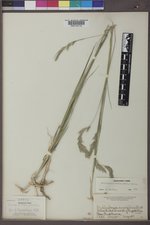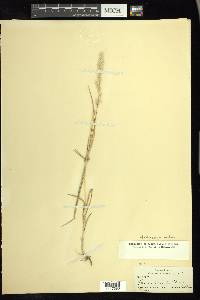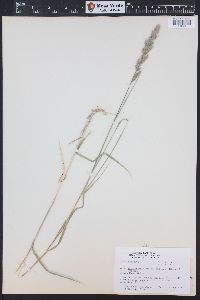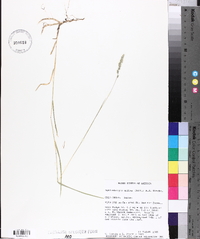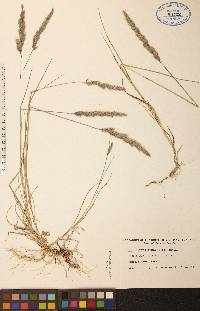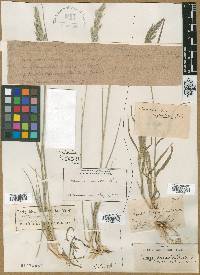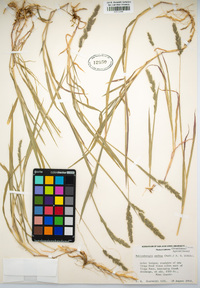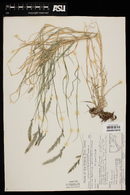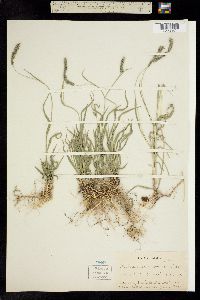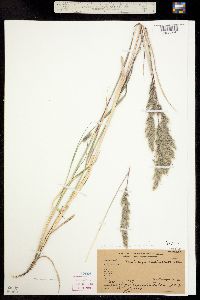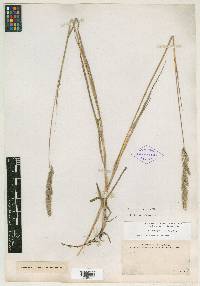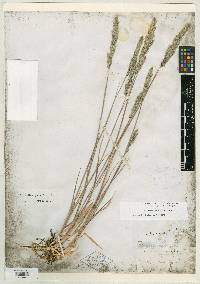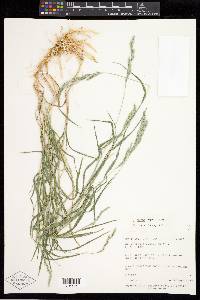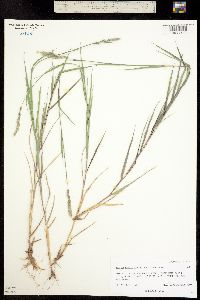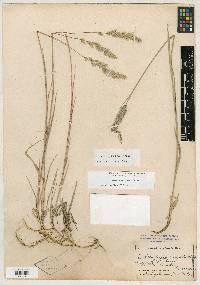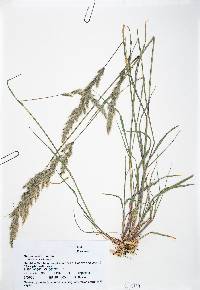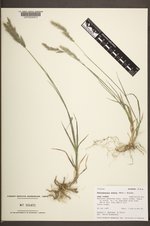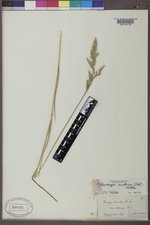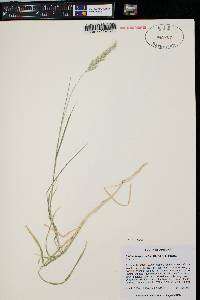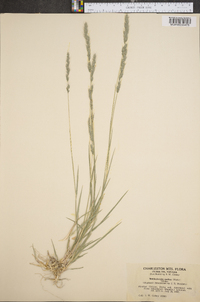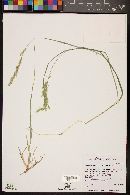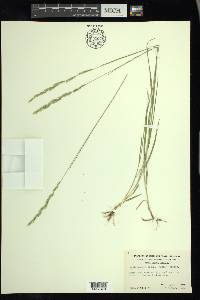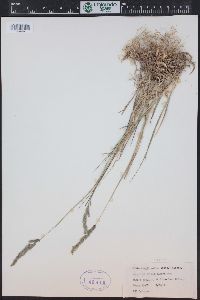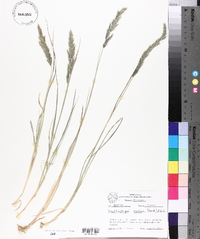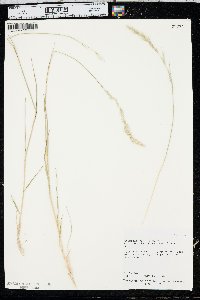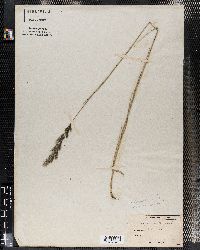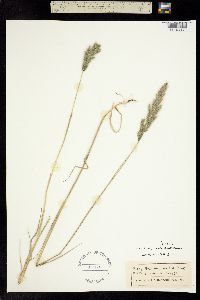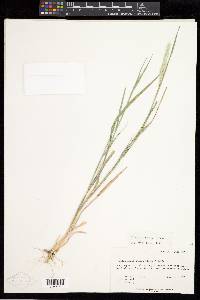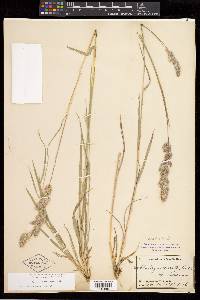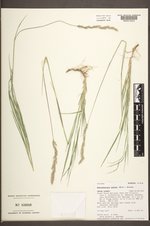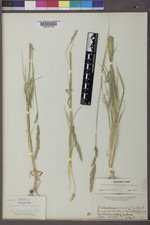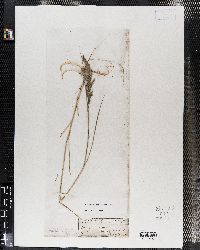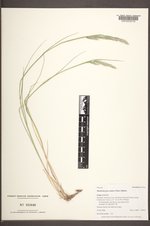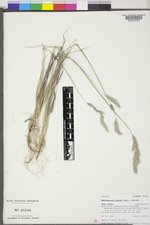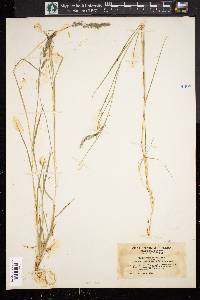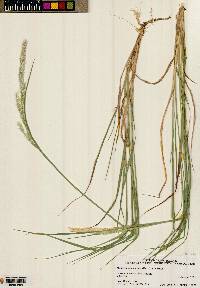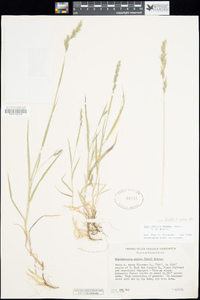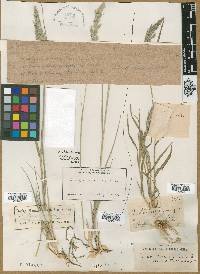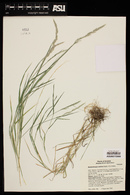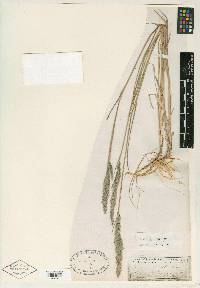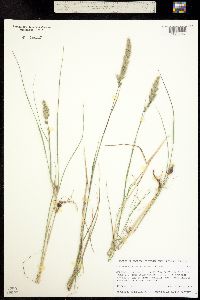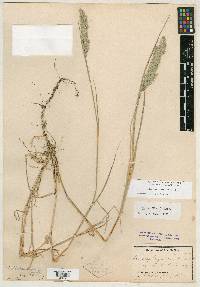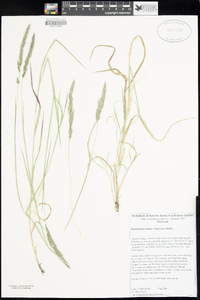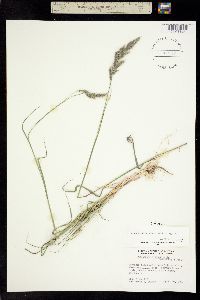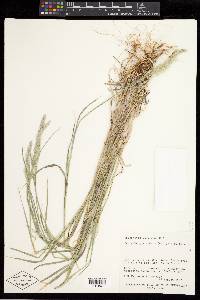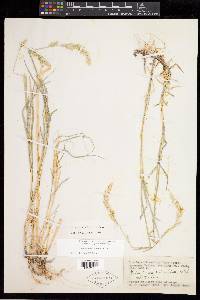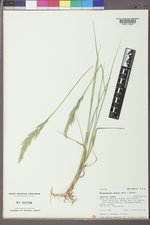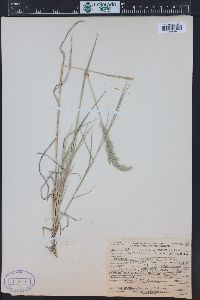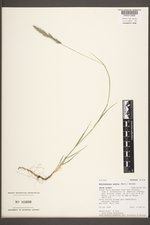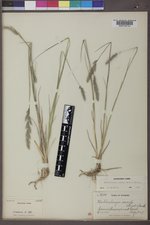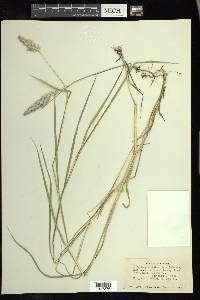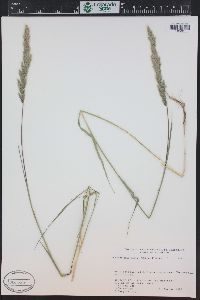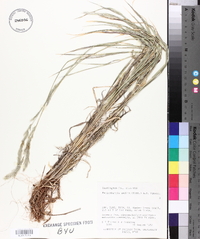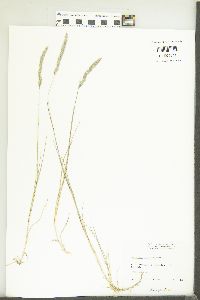
|
|
|
|
Family: Poaceae
Fox-Tail Muhly, more...foxtail muhly
[Calamagrostis andina Nutt., moreMuhlenbergia comata (Thurb.) Thurb. ex Benth., Vaseya comata] |
Plants perennial; rhizomatous, not cespitose. Culms 25-85 cm tall, 0.9-1.7 mm thick, ascending; internodes glabrous for most of their length, scabrous to strigose below the nodes. Sheaths scabridulous, especially basally; ligules 0.5-1.5 mm, membranous, truncate, lacerate to ciliate; blades 4-16 cm long, 2-4(5) mm wide, flat, scabrous abaxially, pubescent adaxially. Panicles 2-15 cm long, 0.5-2.8 cm wide, contracted, dense; primary branches 0.5-5 cm, appressed to strongly ascending; pedicels 0.5-1.5 mm, appressed, strigose. Spikelets 2-4 mm. Glumes equal to subequal, 2-4 mm, subequal to or longer than the florets, 1-veined, veins scabridulous, apices acuminate to awn-tipped; lemmas 2-3.5 mm, lanceolate, grayish-green, hairy on the calluses and lemma bases, hairs 2-3.5 mm, apices acuminate, awned, awns 1-10 mm; paleas 2-3.5 mm, lanceolate, bases with silky hairs between the veins, apices acuminate; anthers 0.4-1.5 mm, yellow. Caryopses 0.9-1.1 mm, cylindrical, yellowish-brown. 2n = 20. Muhlenbergia andina grows in damp places such as stream banks, gravel bars, marshes, lake margins, damp meadows, around springs, and in canyons, at elevations of 700-3000 m. It grows only in the western part of southern Canada and the contiguous United States. FNA 2007, Utah Flora 1983, Field Guide to Forest & Mtn. Plants of N AZ 2009 Common Name: foxtail muhly Duration: Perennial Nativity: Native Lifeform: Graminoid General: Perennial with stems 25-85 cm, erect, with a narrow, dense inflorescence composed of small, silky spikelets; rhizomatous, rhizomes scaly. Vegetative: Blades 4-16 cm long, 2-4 mm wide, flat, scabrous below, pubescent above ; ligules 1 mm, membranous, ciliate; internodes mostly glabrous, scabrous below the nodes. Inflorescence: Panicle spike-like, 2-15 cm long, 1-3 cm wide, contracted, often interrupted or lobed; branches appressed, pedicels 1 mm; spikelets 2-4 mm long, 1-flowered, whitish; glumes 2-4 mm, 1-veined, subequal to or longer than florets, apices tapered to a point or awned; lemmas 2-3 mm, lanceolate, hairy on calluses and lemma bases, with hairs 2-3 mm long, tapered to an awn 2-10 mm long; paleas 2-3 mm long, bases with dense silky hairs; anthers <1 mm long. Ecology: Found along streams, in moist portions of canyons, meadows, and marshes below 10,000 ft. (3000 m); flowers July-September. Distribution: All western states, Texas, and Kansas Notes: Is similar to Muhlenbergia racemosa, but M. racemosa has lemmas that are pilose on the lower portion rather than having 2-3 mm-long hairs found in M. andina. Ethnobotany: Stems were used for brushes and brooms. Etymology: Muhlenbergia is named for Gotthilf Heinrich Ernst Muhlenberg (1753-1815) a clergyman and botanist from Pennsylvania; andina means from the Andes. Editor: LKearsley, 2012 |

